The case studies below support Mandy Cook’s research on using the woodland environment to help people with early stage dementia.
Woodland Celebration Day – Lochore Meadows Country Park, Lochgelly, Fife

Neil Mapes, Managing Director, Dementia Adventure recounts a day at Lochore Meadows Country Park, Fife for people with dementia, their families and carers:
"The Woodland Celebration Day was a project delivered by Dementia Adventure and the VisitWoods team at the Woodland Trust for Scotland. Participants included people living in residential and nursing homes as well as active younger groups of people living at home. A variety of nature activities were offered for people with different interests and with varying levels of need and frailty.
People living with dementia using wheelchairs enjoyed the picnic lunch, views across the lake, nature noughts and crosses, recording their connection with nature on strips of cotton, as well as reminiscing about the location and elements of nature from their younger days.
Some participants remembered the coal mine which stood on the site before the planting of the woodland, whilst others reminisced about family days out enjoyed as children. Indoor activities were also on offer for people to make nature collages. The more physically able participants enjoyed these activities as well as a loch-side walk, with a small group taking an extended walk around the woodland."
Participants recorded their connections with nature on cotton strips. These were tied to trees and bushes along a loch-side walk and included the following connections and reflections:
• ‘Wildlife and plants, loch and bats, swans, cygnets and ducklings’
• ‘Animal sounds, people laughing, children singing’
• ‘Saw lots of people walking their dogs’
• ‘Trees, blossom, grass’
• ‘I enjoyed being in the fresh air’
• ‘Meeting up with other people and walking together’
• ‘Feeling the sun on my face and hearing the wind in the trees’
To find out more: MAPES, N. (2014) Section on Woodland celebration days in chapter on Getting out and about in the British Countryside: dementia adventure. In: M. Marshall and J. Gilliard (eds), Creating culturally appropriate outside spaces and experiences for people with dementia. Jessica Kingsley Publishers, pp. 50–3.
Woodland Day Centre Eghjorten, Grib Skov Forest, Denmark
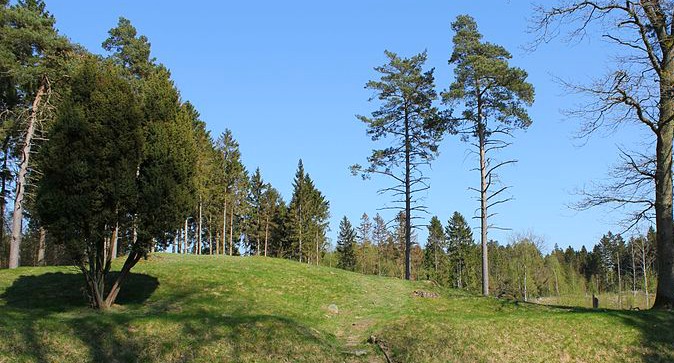
Research in Denmark studied people with dementia who lived at home, at a forest day centre in the municipality of Hillerød in North Zealand. The results showed days spent in the forest gave people with dementia meaningful experiences, which they remembered better than indoor activities, and communicated them more readily with the group.
As well as getting exercise, they got to know each other better on walks and shared experiences of nature. This evoked memories and provided participants and staff with a better knowledge of each other. The research concluded that nurses employed in home care organisations and care centres as dementia consultants/coordinators can help to shift specialist development of initiatives for people with dementia past normal institutional thinking – out into the green outdoors. People with dementia are encouraged to make use of their mental, social and physical resources.
To find out more: SWANE, C.E. (2005) Green care – the significance of nature to dementia sufferers. Danish Journal of Nursing 14, 22–6.
The Bennachie Woodland Wander Project, Aberdeenshire
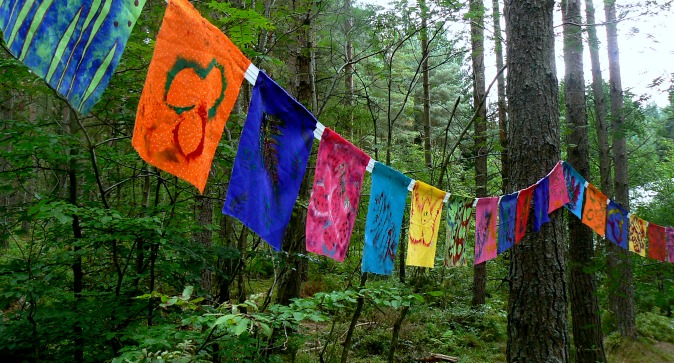
The Bennachie Woodland Wander Project was a collaboration between people living with dementia and their carers. It was led by Sarah Wakeford, a visual artist working within education, health-care and community settings. The project, which took place in the late summer and autumn of 2013, offered opportunities to help create artwork that would contribute to an arts trail in the forest and was part of an Aberdeenshire-wide arts and dementia initiative called Create:Connect, supported by Aberdeenshire Council and Alzheimer Scotland.
Sarah’s idea was to get people out and about and enjoying the surroundings. She wanted each workshop to be a little outdoor adventure, introducing new techniques and materials at each workshop to keep it fun and interesting. There was an emphasis on a social, friendly and relaxing atmosphere over any pressure to create finished artwork.
Slide shows became a feature of the workshops. At the start of each one, Sarah displayed the images from the last workshops as a reminder for returning participants and an introduction for anyone joining the group. At the end of the workshop the images were reviewed from that session as a good way to celebrate the achievements.
Extracts from Sarah’s blog:
‘We have had some amazing feedback about our sessions and the work we have been creating. I had an amazing email from one of the participants' daughter saying how worthwhile the sessions were and how they were having a positive impact on her family. As well as getting out and about during the sessions some of the participants have been coming back to Bennachie independently to show people the artwork. This is brilliant that they want to extend the experience and it shows a sense of pride and achievement that I am very happy about.’
‘I have seen such a change in attitude in some participants from the first session. On the first session they were sitting around the table looking quite daunted by the art materials in front of them and didn’t make a move without my say so. These days they come in a grab whatever I have laid out and get stuck in full force with no inhibitions!’
Comments from the participants:
- ‘We have had a super time at our get together art adventures. It has been so much fun, everybody joined in and it has been a real social occasion and we were all chuffed with our art work.’
- ‘We have had such a wonderful time, enjoyed it so much. Meeting new people and having a really good time and a laugh. We learned some new ideas and arts.’
To find out more: see posts on between August and October 2013.
Borders Forest Trust and NHS Borders Woodland Dementia Project
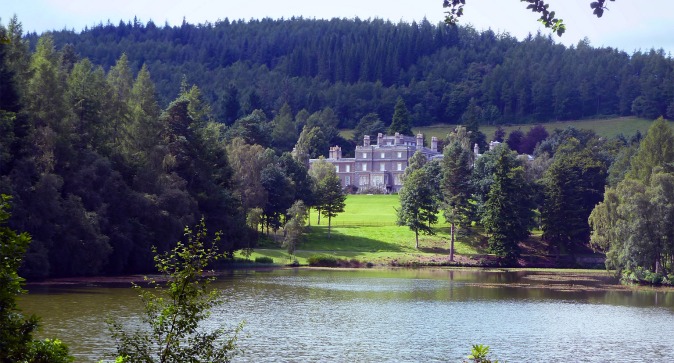
The aim of this pilot project was to enable people with dementia and their carers to access, discover and enjoy local woodlands. These included Bowhill Country Estate, Wooplaw near Lauder, and Gordon Community Woodlands in the Borders. Sensory stimuli and simple activities such as environmental art using clay and natural materials, photography and willow hurdle weaving complemented the main activity of walking and exploring the woodland environment.
The Borders Forest Trust ranger noted that the project not only helped participants to explore and engage with others within a woodland setting but also gave carers some positive respite on two levels. One was spending quality time together in a supported environment, and on the other was having time apart, with one carer commenting that ‘it was like heaven, having some me time’.
Comments from the group during evaluation of the project included:
• ‘We did it on our own without the family needing to take us’
• ‘Getting out in the woods and meeting people stops you from sinking into a pit and withdrawing into yourself’
• ‘Even though everyone had their own limitations, dementia wasn’t the focus’
• ‘Watching my wife taking part in the group and trying different activities was great’
Cairngorms Walking to Health Project
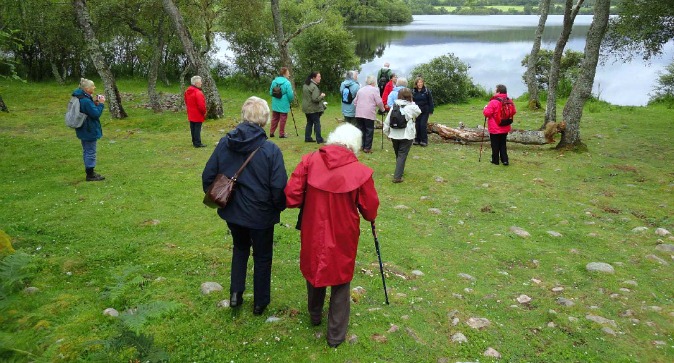
The South Aberdeenshire Service of Alzheimer Scotland and the Cairngorms Walking to Health Project have worked together for over seven years to deliver a health walk to support Alzheimer Scotland’s Dementia Café project and a Nordic walking session for the younger, fitter users.
The walks included trees, woodlands and forest sites. Carers were also included in the walking groups. The project aimed to give people with dementia and their carers the opportunity to meet new people in a relaxed situation, offered social support to participants and gave them the opportunity to take up a new interest and to try a new activity.
Participants’ comments:
• ‘The café walk is really enjoyable, friendly, the walking, all the people, it’s a dream’
• ‘A very nice crowd, walking in a group, people have time for everyone’
• ‘It is a wonderful way to enjoy other people as well as give us the opportunity to keep fit’
• ‘It’s always good to get out in the fresh air and join a group of such friendly folk’
To find out more: MELROSE, A. (2013) Evaluation of the Cairngorms Walking to Health Project, April 2011 to March 2013. Cairngorms Outdoor Access Trust.
Memory Lane Walking Group – Glasgow Green
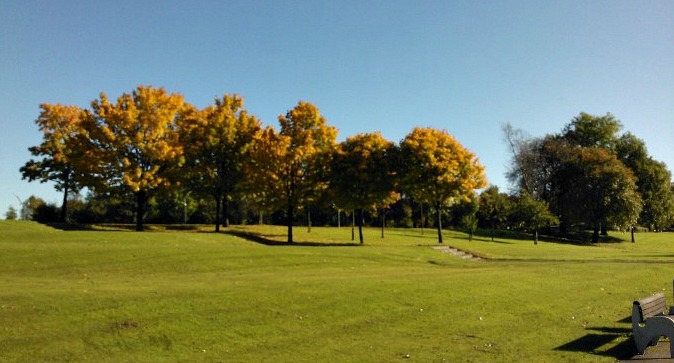
The Green is the oldest park in Glasgow, situated within walking distance of the city centre east of the Saltmarket. The Memory Lane Walking Group involved a partnership between Alzheimer Scotland and Paths for All.
Feedback from Susan Rendell, Link Worker/Volunteer Co-ordinator, Alzheimer Scotland (2014):
‘The purpose of the Memory Lane Walking Group was to encourage and empower people with dementia and their carers to engage in an activity together, but also to ensure that individuals who were able to, make their own way to a planned activity every month. From experience working with people with dementia, the progression of the disease highlights to them what they can no longer do. This increases feelings of isolation, frustration and can lead to depression. The Memory Lane Walking Group gives people affected with dementia access to a monthly volunteer-led walking group, this allows them to take part and enjoy a healthy activity which also reduces social isolation. This currently works extremely well with very few individuals cancelling going to the group. The success of the group has meant that even when we experienced a very wet and windy day in November all members were still enthusiastic about attending.’
Feedback from participants:
• ‘When I feel low, going for a walk and talking to people who are the same as me makes me feel happier’
• ‘The walking group has encouraged me to start swimming again which I now do with my family’